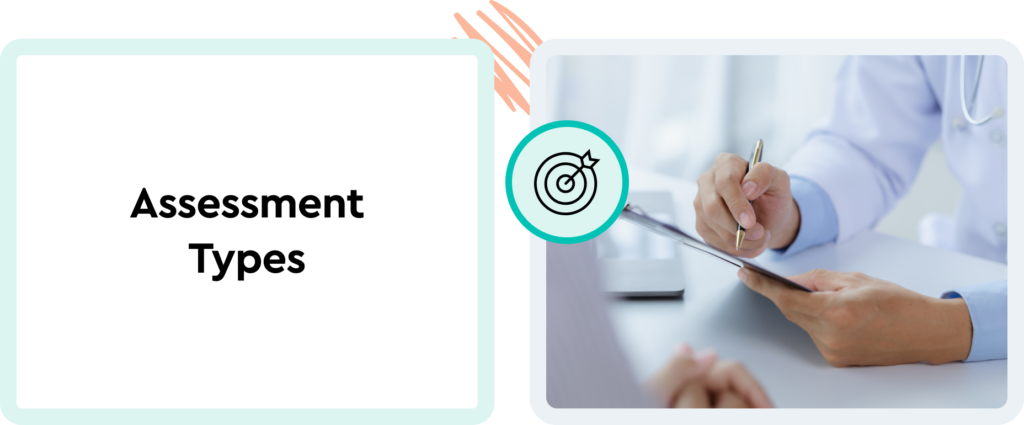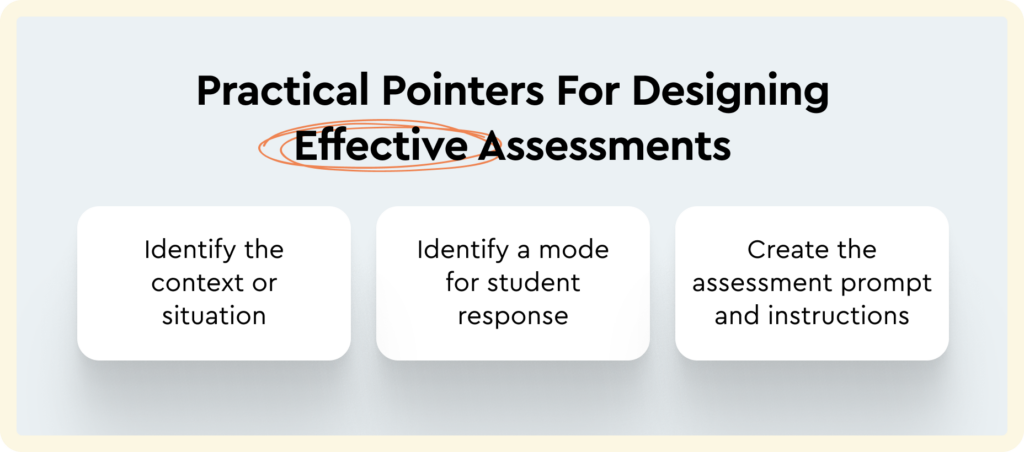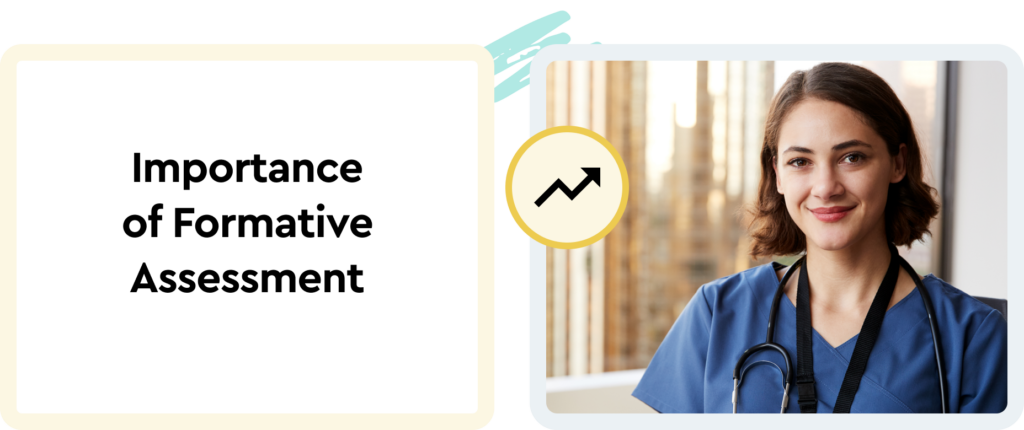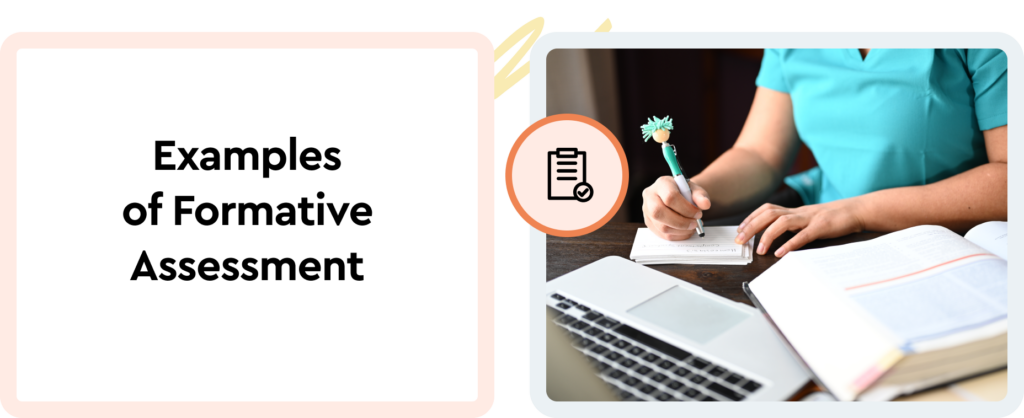This is the third and final blog in our series on implementing the new AACN Essentials into your nursing education program.
This step—focusing on assessment and feedback strategies to validate skill competencies— is building the proof. It’s ensuring that you have the right methods to measure students’ development and provide them with the actionable feedback they need to build their competency and become practice ready.
The New Essentials require a pivot away from traditional grading methods and toward a continuous assessment and feedback model—expanding the focus to include competencies rather than just knowledge.

Assessment Types
Traditional assessments consist of testing, grades, and transcripts that evaluate a student’s progress, but don’t measure competency or real-word application. To align with the new AACN Essentials, the purpose of assessment has shifted toward evaluation of demonstrated competencies. While nursing students must remain comfortable with traditional exams (NCLEX preparation is key), they also need to demonstrate their knowledge and ability in real-life situations. To match this shift in purpose, assessment strategies and tools must also change.
In this short video, nurse educators at Alverno College in Wisconsin identify three types of learning assessment:
- Assessment OF Learning is a standards-based measurement of progression, identifying whether or not a student is on target.
- Assessment FOR Learning is a diagnostic measurement to provide developmental feedback to both the learner and the teacher.
- Assessment AS Learning is a meta-cognitive process, using self-assessment, peer feedback, and instructor feedback to help students set and monitor progress toward learning goals. They’re learning from their performance.
To effectively evaluate progress, educators must start by identifying tangible desired learning outcomes, then tie assessments to measuring success toward those outcomes. They must also identify which actions or steps will be observed during the assessment to gauge progress.
AACN has developed an Essentials Tool Kit to help educators master essential concepts and skills. As an example, the toolkit offers strategies to assess students’ clinical judgment—such as reflective writing, debriefing, and simulation exercises. Creating experiences where nursing students can practice making sound judgment calls and rational decisions to support a patient’s care is critical to building their confidence and competence as nurses.

Here are some practical pointers for designing effective assessments:
- Identify the context or situation
- Identify a mode for student response
- Create the assessment prompt and instructions
Modes of student response include:
- Oral: presentations, interviews, debates
- Written: essays, reports, progress notes, journals
- Visual: digital film, video feedback, photos, posters
- Integrated: clinical assessments, exhibits, research projects, psychomotor skills
- Process: portfolios, journals, records of observed behavior, self-assessments
As you design an assessment, keep the following questions in mind:
- How close is the assessment to what they’ll actually do in the field?
- Is it clearly related to outcomes and competencies?
- Does it fit the level of the student?
- Does it elicit the most advanced performance the student is capable of?
- Does it include directions distinguished from criteria?

Importance of Formative Assessment
Formative assessment means monitoring student learning and providing ongoing feedback throughout the learning process—so both instructors and students can improve. In contrast, summative assessment means evaluating student learning at the end of an instructional unit.
Formative assessment links learning with teaching. It allows students to gauge their own performance and make adjustments to master skills, and provides instructors with ongoing measurement of students’ skill development so they can adjust their teaching. As a result, it has been found to increase the overall quality of learning for both faculty and students.

Examples of Formative Assessment
Some examples of formative assessments in nursing education include:
- Drawing a concept map to represent understanding of material
- Writing a brief synopsis of a lecture’s main point
- Submitting a research proposal for feedback
- Using a quizzing platform to reinforce knowledge
To become confident, practice-ready nurses, students must learn to think on their feet, using their clinical judgment to make appropriate decisions in real time. Formative assessment provides both students and instructors with unmatched, ongoing insight into learning progress and gaps in knowledge, for more comprehensive preparation and effective practice.

Feedback
When conducting formative assessments, nursing education instructors should ensure that their feedback is meaningful and actionable. It should be specific, so students know precisely what they can improve upon. It should also be provided frequently, and identify which skills are performed well and which need further improvement.
Feedback is essential to building competency. When used in conjunction with instructor feedback, self feedback and peer feedback provide real preparation for the feedback nurses will inevitably give and receive in the clinical setting.
Helpful Hint: You can increase nurse readiness while saving time. Streamline clinical strategies like skills checks, debriefings, and head-to-toe assessments—using the proven combination of video + feedback—with GoReact.
For more information about the importance and attributes of effective feedback, read our Constructive Feedback Checklist.
To make your feedback more meaningful, check out this video.
Conclusion
Incorporating video + feedback as an assessment tool gives students more opportunities to think critically, reflect on outcomes, and use those insights to improve future performance. It also enables nursing education programs to ensure consistency and adherence to standards like the AACN Essentials.
When you’re ready to see how video + feedback can make assessments more actionable and meaningful for students in your nursing ed program, reach out to schedule a GoReact demo. We’ll show you just how easy it is to assess skills and provide impactful feedback to promote practice readiness.











